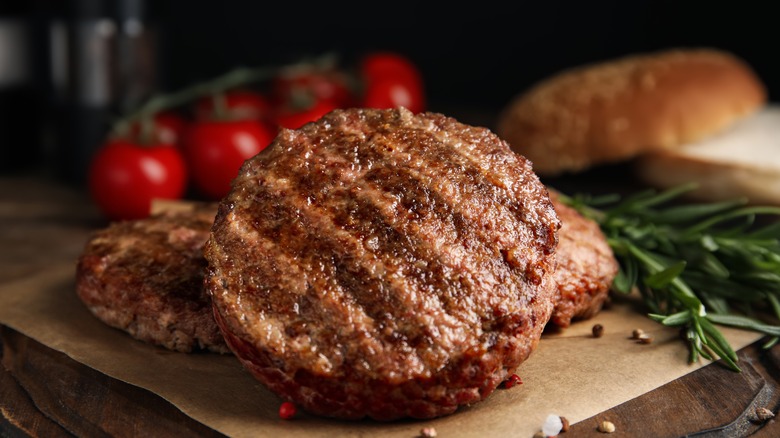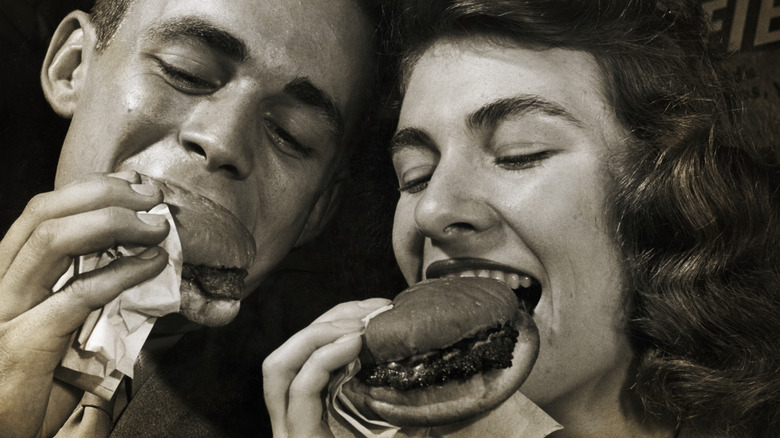The First Documented Burger Featured Wine And A Nutty Ingredient
The hamburger has long been considered synonymous with America. We love burgers so much, we even gave them their own day — National Hamburger Day, coming on May 28 will celebrate these meaty excesses. But perhaps, before celebrating the burger's greasy present, it's worth looking at its ancient past. While the hamburger as we know it was likely invented in the late 19th or early 20th century, the food actually has a far longer — and more global — history than many are aware of.
The first documented hamburger doesn't exactly resemble its modern day descendant. In fact, it was more of a fancy, minced meat patty with notes of wine and nuts. This meat patty (a proto-burger, if you will) dates back 1,500 years to Roman times and its recipe was recorded in an ancient cookbook (via Museum Crush). Industrial meat grinders wouldn't be invented for centuries, so the meat was finely cut by hand. The patty, called "Isicia Omentata" featured a handful of other ingredients you won't find in modern burgers: wine, pepper, pine nuts, and garum — or "Roman ketchup"— a fish-based sauce and flavor-enhancer. Garum is considered to be a relative of Worcestershire sauce, which is now, amazingly, a magic ingredient in many homemade burger recipes. Pine nuts, on the other hand, were a ubiquitous Roman ingredient used in everything from sauces to desserts, and have even been uncovered in the ruins of Pompeii.
From wine to Whoppers
But what about the sandwich we know and love? Well, the bread part came later. In 1758, British writer Hannah Glasse published The Art of Cookery, which contained a recipe for a "Hamburgh Sausage." The contents of the dish sound familiar: minced beef, pepper, and wine, just like the Romans' original patty. According to What's Cooking America, Glasse also included rum, nutmeg, and garlic, and she made one groundbreaking recommendation: She said toasty bread was a good accompaniment to the Hamburgh Sausage.
Americans who fear that their beloved national food has been ripped away from them should take a deep breath. A large portion of the hamburger's origin story takes place on American soil, with no wine or pine nuts involved. The Roman ground beef patty came to the U.S. with German immigrants in the form of the Hamburg steak. Then, things get a little murky, and the hot American debate for ownership of the hamburger picks up steam.
The Library of Congress sides with Louis' Lunch, a restaurant in New Haven, Connecticut that advertises itself as the oldest hamburger place in the country. Then, there's the claim from Fletcher Davis, who served burgers he had long been selling in Texas at the St. Louis World's Fair in 1904. There's also Wisconsin's "Hamburger Charlie" Nagreen, who says his squashed meatball between bread was the first version of the beloved sandwich. But nothing was the same after Walter Anderson, founder of White Castle, changed the game in 1916 with his fluffy-bunned, juicy-pattied version of the burger we hold so dear today.

